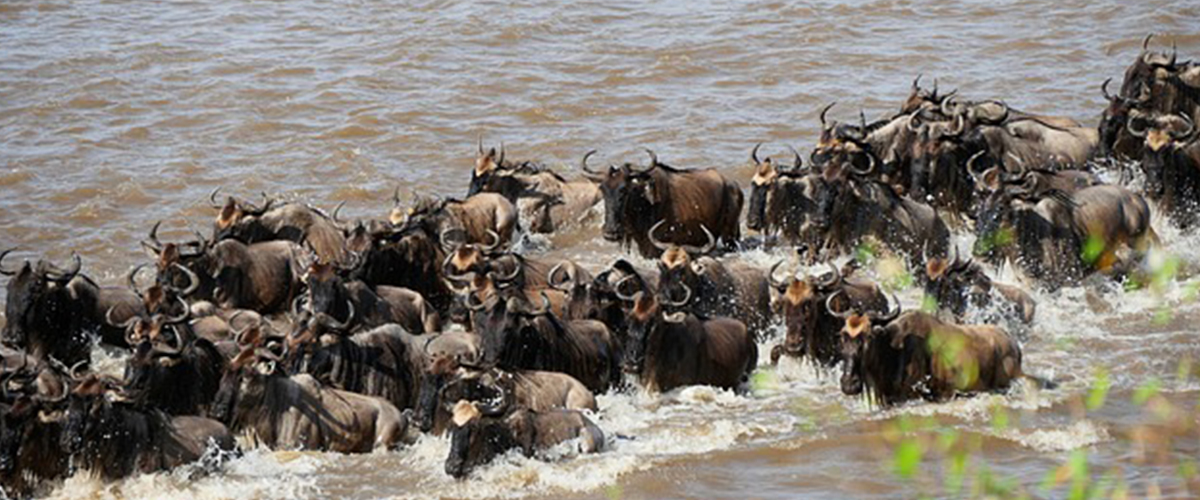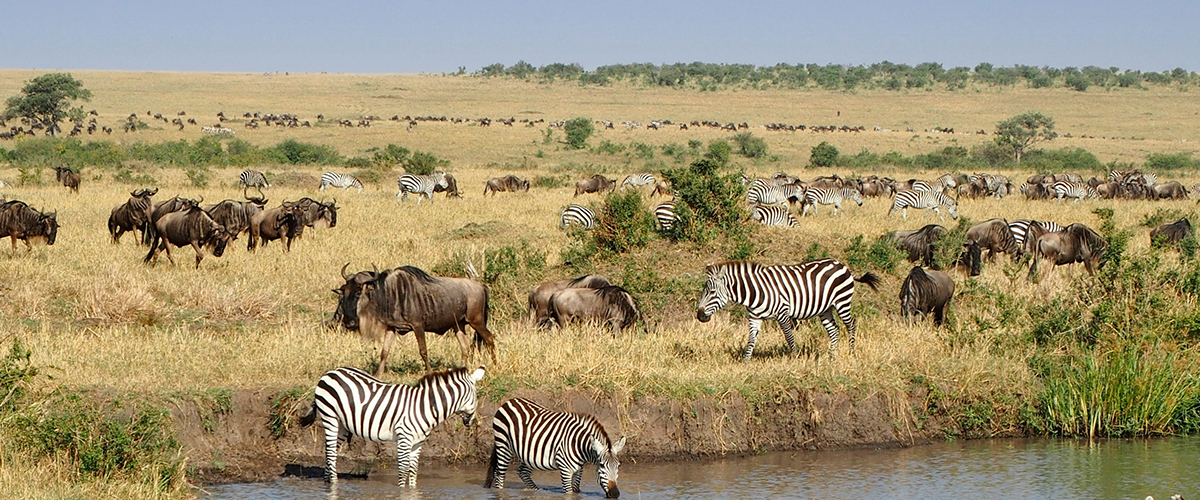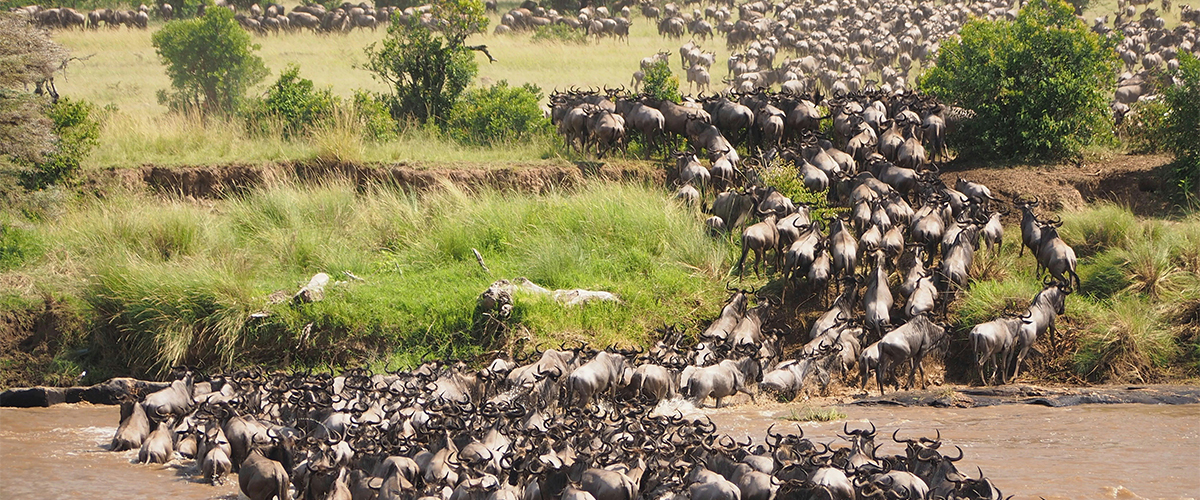The great wildebeest migration is a phenomenon event. Millions of Wildebeest herds accompanied by, large numbers of zebras, gazelles, and other grazers Move between Serengeti and Masai Mara Ecosystem in search of green pastures and water this has been termed as one of the Seven Natural Wonders of Africa. The migration cycle always begins from the southern Serengeti Ndutu region following the rainfall on the extensive grassland of Serengeti-Masai Mara; thousands of herds will lose their lives annually to predators, Exhaustion, and fatigue on this Mega endless exodus.
1. Late December: – March-Southern Serengeti
An exodus for the strong and daring the great wildebeest’s herds! Young and old all set in search of food and water. The herds are concentrated in huge numbers in the southern Serengeti Ndutu region. It is during this period that over 800,000 calves are born daily at the open grassland of the Ndutu region- lots of action between predators and prey here! Alex Edward, Chief Guide and migration expert at Amet Adventures point out. Here the grass is rich in potassium, calcium, and phosphorus; Thanks to Volcanic eruptions that took place millions of years ago. The herds will remain here until the newborns’ are strong enough to tackle the long journey ahead. At least 2 nights stay in the Ndutu region allows a maximized experience for visitors taking a safari during this season.
2. April – Early June:-Western Serengeti
It is getting dry and most of the grass is gone at southern Serengeti, the herds start moving west towards the Grumeti River. The herds synchronize themselves with zebras, gazelles, and other grazers, large numbers will move to the western corridors while others get scattered to the central Serengeti in Seronera and some to the north along the eastern boundary of Serengeti. It is already the rainy season and mating (annual rut) will take place during this season only the strong and fittest bull will enjoy having a bigger territory.
The herds will spend time around the western corridor, of the Grumeti River thousands lose their lives to predators such as lions and crocodiles from the Grumeti River in what has been termed as “the deadliest migration of all time”; explains Edward.
3. June – July: – Central Serengeti
The wildebeest migration continues moving northwards leaving the Grumeti as the river is getting low, during July and August; the herds are spread out across Ikorongo, and fort Ikoma. By now the herds are moving fast towards Masai Mara in neighboring Kenya.
4. August – September:-North Serengeti
This marks the climax of the wildebeest migration and happens to be the best timing to spot the iconic Mara river crossing. Millions of herds reach the Mara River the crossing is still unpredictable, not even the wildebeests know when they will cross and therefore requires your patience, Explains Edward, the dramatic struggle as giant Mara river crocks fight to make a kill is the greatest experience, many herds will lose their lives here to the crocks and only the fittest makes it to Masai Mara.
5. October – December
The grassland in Masai Mara in the first few weeks starts drying up, the rains are now beginning in Tanzania, and the herds start their journey back to Serengeti, come November the herds are making their way to Ndutu, and finally, the calving season begins again in late December at Ndutu. The life cycle begins all over again.
Dates and Places to watch the Great Wildebeest Migration




